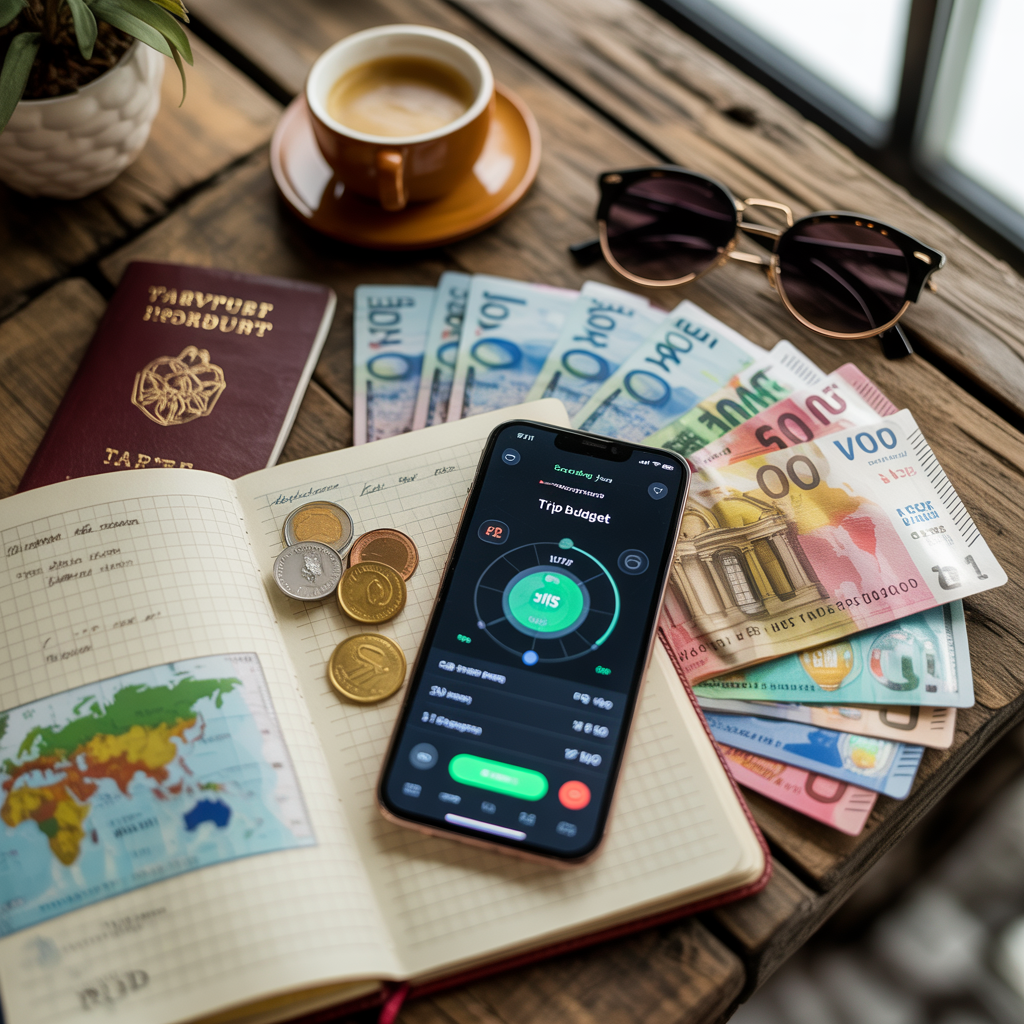Language Learning with AI
How AI-powered Language Learning Apps Can Help You Communicate While Traveling
Traveling to new countries is an exciting adventure, but it often comes with a language barrier. Being able to communicate effectively while traveling enhances your experience, allows you to engage with locals, and makes navigating new environments smoother. Language learning with AI is revolutionizing the way we approach this challenge. AI-powered language learning apps are not only making it easier to learn a new language, but they’re also personalizing the experience to fit your unique needs and schedule, especially when you’re on the move.
From translation tools to conversational practice, AI has opened up a world of possibilities for language learners. These advancements have brought efficiency, customization, and accessibility, allowing travelers to gain language skills in ways that were once unthinkable. In this post, we will explore the impact of AI on language learning, why it’s beneficial for travelers, and how to choose the best AI-powered language apps for your next journey.
Why AI Is Transforming Language Learning
Traditionally, learning a new language meant attending in-person classes or studying through textbooks. However, the rise of AI-powered language learning has completely changed the landscape. AI adapts to your learning speed, helps with pronunciation through speech recognition, and provides real-time feedback. Unlike traditional methods, AI offers a highly interactive and personalized experience, catering to the learner’s specific needs and goals.
AI language learning tools such as Duolingo, Babbel, and Rosetta Stone have integrated machine learning algorithms to assess and improve the way users practice languages. These apps use AI to analyze your strengths and weaknesses, tailoring lessons that suit your progress. As you use these apps, they continuously refine the learning experience, making sure you’re focusing on areas that need improvement while still reinforcing what you’ve already mastered.
Language Learning with AI: Personalized Learning for Travelers
One of the standout features of AI-powered language apps is personalization. These platforms use data-driven insights to adjust lessons according to your learning style and pace. For travelers, this means you can learn a language faster and in a more practical way, focusing on conversational skills and phrases that are immediately useful.
For instance, AI can help you prioritize the vocabulary that will be most relevant for your travels. Whether you’re planning a trip to Japan or Brazil, AI-powered tools can customize lessons to teach you how to order food, ask for directions, or engage in small talk with locals. This focused approach allows you to gain functional language skills more quickly than traditional methods, which often emphasize grammar and structure over practical conversation.
Many apps also track your progress in real-time. For example, Duolingo uses AI to determine which words or phrases you struggle with and integrates them into future lessons. The result is a learning experience that evolves based on your needs, making it ideal for those traveling on tight schedules who need to learn quickly.
AI-Powered Speech Recognition for Better Pronunciation
Pronunciation is a crucial part of mastering a new language, and this is where AI excels. AI-powered language apps use speech recognition technology to listen to your pronunciation and provide immediate feedback. This feature is incredibly beneficial for travelers who may not have the luxury of practicing with native speakers. Apps like Babbel and Busuu incorporate this technology to help users fine-tune their accents and sound more like native speakers.
Speech recognition technology works by analyzing how closely your pronunciation matches the correct sound in the target language. Over time, the app helps you correct mistakes and improve fluency, giving you the confidence to speak the language in real-world settings.
This feature is particularly helpful when you need to practice saying commonly used travel phrases such as “Where is the nearest train station?” or “How much does this cost?” Having proper pronunciation ensures that you are understood by locals, which can make your travel experience smoother and more enjoyable.

Overcoming Language Barriers in Real-Time
Real-time translation is another area where language learning with AI shines. While it’s important to learn basic conversational skills before traveling, there will inevitably be times when you encounter unfamiliar words or phrases. AI-powered apps like Google Translate and Microsoft Translator allow you to overcome these hurdles by offering real-time translations. These tools can translate spoken words, text, and even images (such as signs or menus), providing immediate assistance when you need it.
Moreover, AI-powered apps can even hold bilingual conversations. For example, Google Translate’s conversation mode allows two people speaking different languages to communicate in real time. This feature is particularly useful when you’re in a situation where learning the language on the spot isn’t feasible, such as during a quick interaction at a restaurant or while negotiating prices in a market.
The Role of AI in Cultural Understanding
Language learning is not just about memorizing words and grammar. It’s also about understanding the cultural context behind the language. AI-powered apps are now integrating cultural lessons into their platforms to enhance this aspect of language learning. For instance, language learning apps like Memrise not only teach you vocabulary and grammar but also provide insights into cultural norms, slang, and etiquette.
By offering these cultural insights, AI-powered apps help travelers avoid miscommunication and potential cultural faux pas. This is particularly valuable when traveling to countries with vastly different customs and social behaviors. Understanding these nuances can improve your interactions with locals and enhance your overall travel experience.
Combining AI Tools for a Holistic Language Learning Experience
One of the most significant advantages of language learning with AI is the variety of tools available to learners. Instead of relying on a single method, travelers can combine multiple AI-powered tools to create a more comprehensive learning experience. For instance, you might use Babbel for structured lessons, Google Translate for real-time translations, and Tandem to practice with native speakers through conversation exchanges.
This holistic approach allows you to gain practical skills quickly, while also deepening your understanding of the language through varied methods. By combining AI-driven apps, you’ll be able to learn a language in a way that’s efficient, engaging, and tailored to your travel needs.
Practical Tips for Learning Languages with AI While Traveling
To maximize the benefits of language learning with AI, it’s essential to integrate these tools into your daily routine while traveling. Here are a few practical tips:
- Set Clear Goals: Focus on learning phrases and words that are directly applicable to your travel experience. For example, prioritize learning how to ask for directions, order food, and understand public transportation systems.
- Use Apps with Offline Capabilities: When traveling to areas with limited internet access, opt for AI-powered apps that offer offline mode. Babbel and Duolingo allow you to download lessons and practice without needing a constant connection.
- Practice Speaking Daily: Take advantage of AI-powered speech recognition to practice your pronunciation daily. This will boost your confidence when speaking to locals.
- Engage with Native Speakers: Use apps like Tandem or HelloTalk to have conversations with native speakers, improving both your listening and speaking skills. These platforms pair learners with native speakers for language exchange, offering real-time interaction.
- Use Translation Tools in Context: While real-time translation tools are incredibly helpful, try not to rely solely on them. Use these tools as a backup and focus on gradually improving your conversational skills.
Embrace the Future of Language Learning
The future of language learning with AI is bright, offering travelers innovative ways to communicate and immerse themselves in new cultures. AI-powered tools are not only helping people learn languages faster but also making the process more enjoyable and accessible. With apps that adapt to your pace, provide real-time feedback, and offer cultural context, there’s never been a better time to use AI for language learning.
Whether you’re planning a short vacation or embarking on a long-term stay in a foreign country, embracing AI-powered language learning tools will enhance your travel experience, reduce stress, and allow for deeper connections with the people you meet along the way.
For further reading and resources, check out these links:













